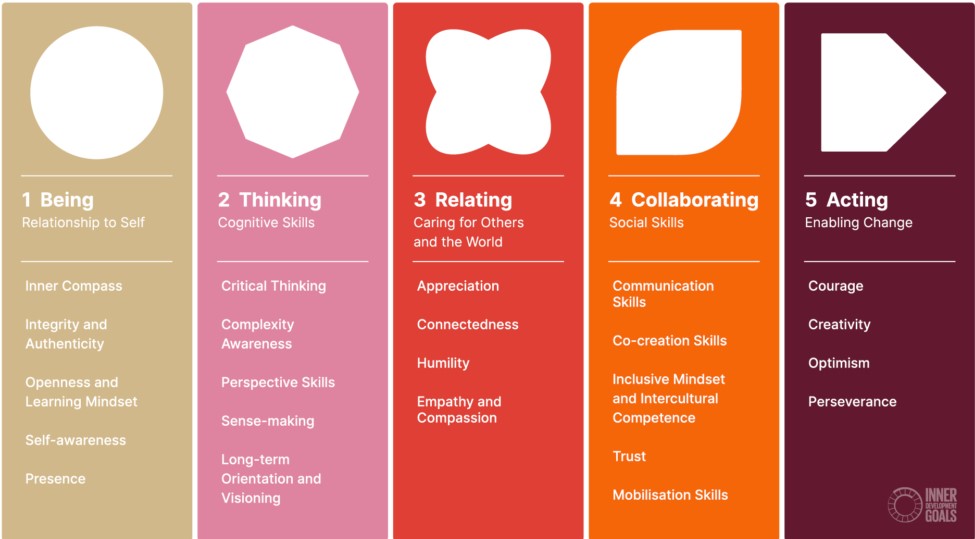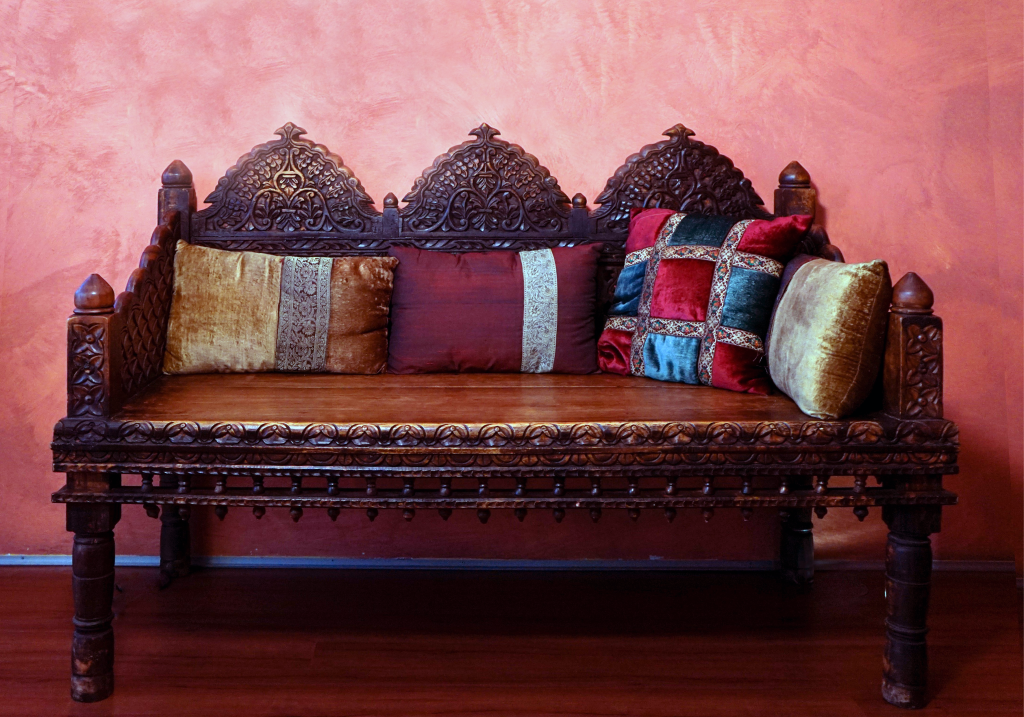The article has relevance for the people who work professionally with interior design, architecture and standardization of sustainability. The content of the article is particularly useful for the professional people who recognize the UN’s call for spirituality in ourselves and the organizations we are linked with.
The article provides concrete examples of how an interior design can be consciously designed with natural resonances to transform external sustainability and human integrity. Capacity expansion adds energy to growth in the interior design industry.
Do You Dare Spiritual Transformation – Professionally?
“In reflecting in depth on the 2030 Development Agenda, in October 2015, the United Nations Population Fund (UNFPA) convened a dialogue around the question: “What deep human and organizational transformation is required to support the goals of sustainable development, and how might such transformation arise in human beings who have experienced suffering and trauma?” …”The main conclusion was that sustainable development requires a “spiritual transformation” of ourselves and the organizations we are linked with that actively extends to the societal, global, and ecological levels1. (Highlighted in italics by the author).
How can the interior design industry perform its processes and end-goal, in a spiritual way, to make human habitats “resilient and sustainable”. The organization ‘Inner Development Goals’ (IDG) encourages the individual to take responsibility for own thought, feelings, habits and (environmental) decisions.
UN conclude that there are still major challenges in relation to the climate action and sustainable growth goals. Companies’ ‘green washing’ creates an illusion of progress in our external existence without real changed processes or decisions.
Spirituality in the Interior Design Industry
” How might the transformation required to support sustainable development, arise in human beings?”, asks the UN.
Transformation of the interior design industry plays a greater role for our global society than a mere projection of what is already known can reveal. By doing ‘more of the same’, the interior design industry contributes to the crises we are experiencing now. At the same time, it is precisely our current situation that may contribute to transformed capacity.
Social trends in our shared environmental crisis suggest that we do ‘something else’. -And we may wonder, how do human beings support a spiritual transformation in the interior design industry?
The Inner Development Goals2 (IDGs) framework focuses on personal growth and development across five dimensions. Coinciding trends in research within the UN’s 17 SDGs and IDGs focus on how a combination of external sustainability goals and internal development goals can create a more holistic and effective approach to global development – and are also applicable to the interior design industry.

For example, a deeper understanding of inner developmental goals, of consciousness and human experience, can inform new types of design decisions. Interior design professionals consciously use natural elements that resonate with inner experiences to promote the client’s well-being when their preferences are experienced in a dynamic context with the surrounding environment.
The natural elements are a set of practical solution tools: The healing nature resonates with the client’s and the interior design professional’s experiences of psychological transformations into the spiritual when used inside. The sets are put together in categories of colors, materials and shapes to support the client’s experience. Below, let us call the nature categories environmental keys.
The Environmental Crisis is Reduced by Adding New Capacity
Expanded human capacities are desired to result in the fulfillment of the UN’s SDGs. IDGs can play a significant role for the transformation of the interior design industry when concrete practice i.a. is performed with environmental keys that resonate with our outer and inner experiences. This means that the interior design professional must expand her responsibility in architecture and interior design, thus ensuring that resonances in an area move in accordance with the individual client’s preferences.
Below is an example of one set of IDG values, that of resilience and adaptability. An interior created for a specific client in a specific location is optimized against relevant environmental keys with the following type of considerations, for example:
Conventionally, resilience and adaptability focus on creating an environment that supports mental and physical well-being, where interior design practices can provide a sense of stability and security, making it easier to adapt to change.
With a deeper connection to the client’s innate and personal preferences, the environmental keys are used in an arrangement of a given space to accumulate resonances of similar natures for the client’s benefit.
The environmental keys to the client’s water experience are about the client’s place in life: Does the client adapt and feel safe or does the client meet resistance and how does the client tackle obstacles.
The environmental keys to the client’s metal experience are about transformation: Adapting the client’s creative expression of ideas and projects that integratively nourish the client’s life to form a necessary part of our shared society.
The environmental keys to the client’s earth experience are about receptivity: Receptivity is important for all kinds of partnerships. It is about how the client gets along with others, how to overcome difficulties and whether you see and use options.
The environmental keys to the client’s wooden experience are about positioning: Can your client adapt and at the same time maintain its authenticity? When the client is optimally positioned, the client can receive returns from the material world.
The environmental keys to the client’s fire experience are about recognition: The recognition between resilience and adaptability promotes enlightenment. Applied information can lead to a related external recognition.

Capacity Tool; Environment Keys
I see the environmental keys as one (of several) concrete tools used in a standardization process to transform the inner development categories, as called for by the IDG; a tool for architects and interior design professionals who are responsible for ensuring that the individual client has a space in which he can let his best sides grow into.
This is done specifically based on the individual client’s preferences. In relation to the client’s preferences, goals and the layout of the position, it is about finding the combination of environmental keys, certain resonances that, at a given moment, invite the client to transform, to see and dare to use other, more optimal decisions.
Five main types of environments are categorized. When the five environments are used for analyzes in the interior design industry, they are characterized in their extreme form. Each category relates IDGs and inner capabilities to an environment that resonates with the client’s preferences. The fact that an environmental category invites a human need depending on time and place constitutes the positive driver for the individual client and can be confirmed by tests carried out by the interior design professional. All five extreme states are further dependent on a set of external frames as well as moving relative to each other. A client experiences the greatest satisfaction when there is a balanced composition of all five categories in the client’s immediate surroundings. Thus, arrangements can be made with an excessive relative weighting of one environmental key over four others, which results in stages that can put the client in undesirable situations.
In practical use, the five categories split out into another four subcategories. The client’s search for a natural element is not always conscious but can be tested by the interior design professional. The indications in this section are professional knowledge for the interior design professional and are only mentioned to indicate a framework of understanding but are not explained further here.
Below is an example of how an internal development goal and environmental keys work in relation to the client’s preferences. The interior design professional’s criterion of success consists in accumulating a satisfactory number of environmental resonances, and even in a quality that is more rewarding than the client’s ‘current’ environmental resonance. Together, the environmental resonances open opportunities for the client’s drive to come through.
Environmental key in category 6:
When the interior design professional uses the industry’s environmental keys, the professional tests meaningful resonances that surround and change in the client, just as natural phenomena and emotions are in eternal change in and around us all.
The external environment in this key category relates to autumn and early winter, when the earth hardens and precipitates into metals and minerals. Therefore, grayish or white colors, large and domed shapes, metallic materials and dynamically contracting and expanding movements are typically used in the interior design.
This environment key is used when the client tests negative, e.g. in relation to the need for helpful friends or to be a support for others. The environmental key is used in connection with philanthropy and altruistic actions. In business, it can be about ‘angel investors’ who invest in the client’s business operations. Privately, it can be about gifts that are given unconditionally but also, about creative projects, being a parent with a rich and cheerful relationship with your children, or with creative blockages.
Testing is performed by the interior professional relating the environmental factors to the client’s need. For example, the environmental key in category 6 can transform challenging conditions in life around (IDG 1) being, relationship to Self, (IDG 2) thinking, cognitive skills, (IDG 3) relating, caring for others and the world (IDG 4) collaborating, social skills, with the inner skills of integrity and authenticity, openness and learning mindset, self-awareness, presence, complexity awareness, sense making, appreciation, inclusive mindset and intercultural competences, trust, co-creation skills, creativity, courage and perseverance.
Standardized Growth for Spiritual Sustainability
The interior design industry relies on several standardizations to ensure consistency, quality, and safety in designprojects. Some key standardizations include sustainable standards like LEED3, BREEAM4, DGNB5.
These standardizations help streamline the design and construction process, reduce costs, and improve efficiency while ensuring that the final spaces are safe, functional, and aesthetically pleasing.
Using IDGs framework as a basis for standardization is visualized as a springboard for measurable prerequisites for internal sustainability in the interior design industry aiming for streamlining the personal environmental transformation process to enable problem solving and decision making from an increasingly spiritual point of view.
The future IDG-based standard can enrich people’s capacity, partly as an extra energy in the change process itself, but also as an extra resource when the industry uses its released capacity for growth. The growth of the industry thus takes place by relating the inner development of human beings with the interior design profession’s practical environmental keys in a given place and in a given time. We are ready to establish a standardization that promotes a connection between the client’s inner and outer world, that promotes spaces where the client’s best sides can grow into.

The standard must include for example:
- Minimize risk, i.a. by:
- Weighted environmental keys used in a given space and time in relation to a client’s preferences.
- Transform resonances for the client before challenges turn into crises.
- Improvement of the client’s conditions, i.a. by:
- Let the consciously designed environment invite the client to achieve his goals in an optimal way.
- Let conscious alternatives guide confusion and misunderstandings to optimal decisions.
- Expand the capacity in the architectural and interior design industries, i.a. by:
- Develop the interior design professional’s spiritual capacity.
- Define success criteria for clients and professionals in the transformation process.
By integrating inner development aspects, individuals and organizations naturally become more effective in implementing and sustaining climate action initiatives.
As our new paradigm is emerging, this type of certification has not been established yet. But I envision a path to sustainability, internal sustainability and growth with the contribution of people/interior design professionals who expand their own capacity. I imagine that the UN’s recommended path to spiritual living is within reach with the interior design industry’s contribution. – Do you?
2https://innerdevelopmentgoals.org/framework
5https://www.dgnb.de/en/certification/important-facts-about-dgnb-certification/about-the-dgnb-system
